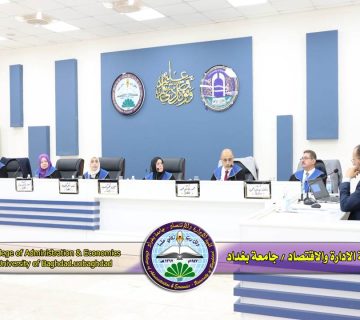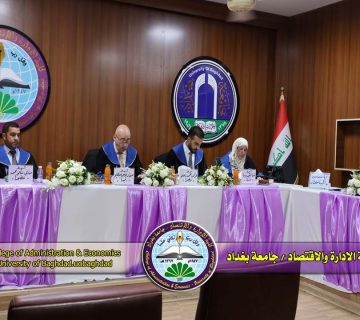The College of Administration and Economics at the University of Baghdad discussed, a PhD dissertation in field of Statistics by the student (Ahmed Mutlag Abdulateef) and tagged with (Estimating the Fuzzy regression panel data model with application) , Under supervision of (Assist.Prof. Dr. Emad Hazim Aboudi )
Panel data models have received increasing attention in recent decades, particularly in the fields of economics, finance, medicine, and the social sciences, due to their ability to incorporate the temporal dimension into statistical analysis. These models are considered more suitable classical cross-sectional models, as they can account for unobserved heterogeneity across units and track dynamic changes within the same unit over time. Generally. panel data models are generally divided into three main types: pooled models, fixed-effects models, and random-effects models.
The fuzzy regression model for panel data is an effective statistical model for analyzing data characterized by two main dimensions: cross-sectional , time and uncertainty. The dependent variable is expressed as a fuzzy number to represent ambiguity and imprecision. In contrast, the explanatory variables are crisp and measured repeatedly on the same units across multiple periods.
These models are particularly used in fields where responses are difficult to measure accurately, such as environmental or medical studies, which rely on linguistic assessments or expert judgments. The estimation process depends on incorporating fuzzy logic principles within a panel data framework, taking into account intra-unit variability across time.
This dissertation aims to estimate a fuzzy regression model for panel data of a linguistic nature using a set of fuzzy statistical methods. The fuzzy fixed effect model was adopted as the general framework for analysis, and a set of estimation methods was used, divided into two main categories: probabilistic methods and fuzzy least squares-based methods.
Among the probabilistic methods, the Tanaka linear regression method and the quadratic programming regression method were applied. Among the least squares methods for panel data, the Fuzzy Fixed Effect Least Square method (FFELSE) and the Fixed Effect Least Absolute Estimation Method (FFELAE) were adopted. In addition, the Bayesian approximation method was employed, which is a hybrid approach that combines the properties of probabilistic methods and fuzzy least squares. It is deserving noting that the researcher employed all these methods for the first time in this field.
Experimental results showed that the fuzzy least squares method had the best estimation accuracy, followed by the Bayesian approximation method. To validate the effectiveness of the models, they were applied to real data related to the water quality index in several locations. Due to the linguistic and fuzzy nature of some variables (especially the response variable), fuzzy regression methods were employed to achieve a realistic representation of the data.
The results obtained showed that the data followed a consistent regression model, and the model was estimated using all the aforementioned methods. The estimations revealed that the explanatory variables (such as pH, dissolved oxygen, nitrate, phosphate, and dissolved solids) negatively impact water quality, reflecting the importance of these variables in assessing the state of the aquatic environment and making appropriate decisions.










